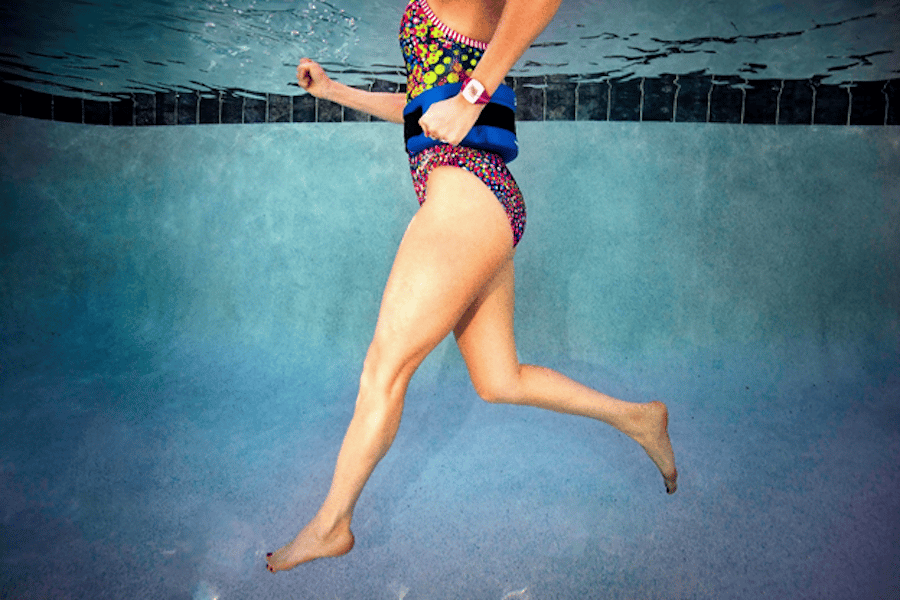We all know what a great workout running is. It strengthens your legs and your cardiovascular system, and you burn lots of calories! That’s the upside.
The downside is that when striking the ground, the force is 3x that of your body weight.
That means a 150-pound person is hitting the ground as if they weighed 450 pounds!
That’s a lot of pressure on your joints. No wonder 70% of runners end up with injuries!
And it’s probably why a lot of people don’t do it. Now that summer is here, many people don’t want to run in the heat.
What can avid runners or wannabe runners do? Enter water running.
Jennifer Conroyd is a certified fitness trainer and founder of Fluid Running, a water running fitness company. She shares the ways people can derive the same benefits (and more) from water running.
How does water running stack up to land running?
Jennifer suggests running in water ideally at a depth where your feet don’t touch the bottom.
When mimicking land running in the water, your legs get a better workout because water is 800 times denser than air.
Running against all that resistance is even more strenuous than running on land, which really challenges your cardiovascular system.
What are the benefits of water running that you don’t get when running on land?
To hold your body upright in the water requires you to engage your core and stabilizer muscles which, beyond a flatter tummy, helps your overall posture.
When running on land, your arms are just “coming along for the ride”. When running in the water, arms are swinging through all that density just like your legs, so your arms get a workout too.
The greatest benefit is that there is absolutely zero negative impact on your joints because you’re essentially floating while doing the workout.
Not only is there no impact, the water pressure combined with the turbulence you create when running helps to flush out any inflammation or soreness you may have in your legs.
Water running is a “secret weapon” used by many Olympic athletes to not only train when injured but to maintain their peak physical fitness without getting injured.
Studies show that even elite athletes can maintain key fitness metrics (VO2Max, run speed, etc.) by running solely in the water – for up to 6 weeks.
It’s especially beneficial for people who struggle with pain that limits their ability to exercise, people who are overweight, pregnant women and those preparing for and recovering from surgery.
You burn 40% more calories than running on land at the same intensity.
You don’t overheat or risk heatstroke in the summer months.
You eliminate the risk of twisting an ankle or falling due to rough terrain.
There is zero negative impact on your body!
What does a water running workout entail?
Jennifer Conroyd suggests following a workout that ideally has timed intervals that indicate how long and how hard you should be running. Because you are not hitting the ground, anybody can do this. You don’t have to be a runner.
30 Minute Water Running Workout
5 minutes
Warm up. Get comfortable in the water. Shake out the cold. Slowly work into an easy jog.
5 minutes
Run at 70% effort
1 minute
Run at an easy pace
4 minutes
Run at 75% effort
1 minute
Run at an easy pace
3 minutes
Run at 80% effort
1 minute
Run at an easy pace
2 minutes
Run at 85% effort
1 minute
Run at an easy pace
1 minute
Run at 90% effort
1 minute
Run at an easy pace
:30 seconds
SPRINT
:30 seconds
Run at easy pace
4 minute Cool down and stretch on the pool wall if possible





